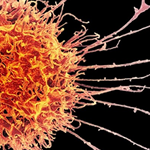 The Biocontainment Facility, Operation, and Maintenance course covers all major aspects of planning, designing, constructing, and running a specialized biological laboratory. The course has been divided into four chapters:
The Biocontainment Facility, Operation, and Maintenance course covers all major aspects of planning, designing, constructing, and running a specialized biological laboratory. The course has been divided into four chapters:
- Biocontainment guidelines and standards;
- Program, planning, design & construction of a biocontainment facility;
- Commissioning, validation & certification; and finally
- Facility operations & maintenance.
While biosafety personnel may not be called upon to design the facility in which they work, they should understand the processes involved in constructing a biocontainment facility. In particular, they should understand the basics of commission, validation, and certification. This course is based on the content outlined in the International Federation of Biosafety Associations (IFBA) certification guidelines for Biocontainment Facility, Operation, and Maintenance evam and can be used as a study aid for people wishing to take that exam.
- Commissioning means to testing and documenting that something is working correctly.
- Validation tests and documents that something will provide the same results each time.
- Certification tests and documents that something meets a predetermined standard.
Because of the complexity and potential hazards involved in biological facilities, biosafety professions should also have basic understandings of how such laboratories are operated and maintained. To properly maintain a facility, there must be plan for both the maintenance personnel and for the biosafety staff to work together. Having a basic understanding of the operations and maintenance (O&M) related to the lab, as well as a risk assessment by the safety personnel, goes a long way toward operating a safe and reliable facility.
Course Learning Objectives
- Identify relevant international guidelines and standards applicable to human, animal (invertebrate and vertebrate) and plant biocontainment facilities and the effect of laws and regulations
- Understand the definitions of risk groups and biosafety levels and the relationship between them
- Understand how the biosafety levels can be adjusted based on the risk analysis
- Identify the persons, and their roles, involved in programming, planning, design and construction process
- Describe factors to be considered when conducting a risk assessment to determine the essential design features
- Understand the processes of Commissioning, Validation, & Certification and understand their importance
- Define the responsibilities and roles of all relevant persons in the commissioning, validation, and certification processes
- Understand the roles of the relevant personnel, especially the biosafety personnel
- Define and describe the components of a commissioning plan and of a validation plan
- Define component testing, systems testing and integrated systems testing
- Identify the similarities and differences of Commissioning, Validation & Certification.
Chapter 1
A. Introduction to biocontainment guidelines and standards
B. Definitions of risk groups and biosafety levels and the relationship between them
C. How the biosafety levels can be adjusted based on the risk analysis
Chapter 2
A. Biocontainment laboratory personnel and their roles involved in programming, planning, design, and construction process
B. Factors to be considered when conducting a risk assessment relating to facility design and construction
Chapter 3
A. Commissioning
B. Validation
C. Certification
Chapter 4
A. Training O&M personnel
B. Maintaining the biocontainment laboratory
C. Risks associated with maintenance as identified in the risk assessment


